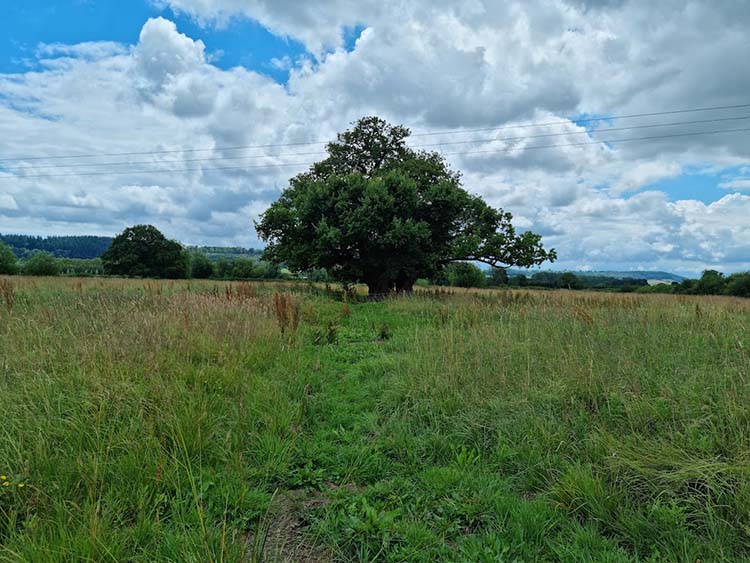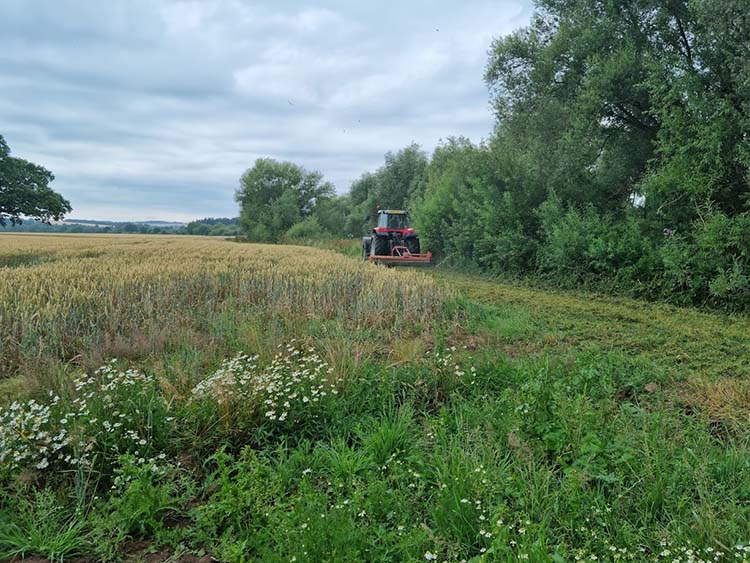The field survey program in 2024 started in early May despite the very wet spring. Some fields were still splashy when we visited them, and the drying out and draining process was painfully slow for many sites. The very wet spring had a negative effect on meadow vegetation, in particular on areas with a slow drainage. A preliminary look at the data has revealed a dominance of wet-loving species as well as nutrient-loving ones, like meadow foxtail Alopecurus pratensis and rough-stalked meadow-grass Poa trivialis.
In 2024, we continued our long-term monitoring of vegetation in the permanent blocks of quadrats at North Meadow and Elmlea SSSIs (Cricklade, Wiltshire), and in Ducklington Mead SSSI. Data were also collected for a number of research trials outlined here:
1. Effects of different cutting dates on species diversity at Oxley Mead SSSI
Firstly we are investigating the effect of different hay cut dates on meadow vegetation in Oxley SSSI (Milton Keynes, Buckinghamshire). This trial is working with The Parks Trust and volunteers who have also kindly shared their views on scything for us here.
2. Soil compaction on species diversity and soil carbon at North Meadow
The second piece of research this year is looking at the effect of soil compaction on the public footpath around North Meadow, Cricklade to see if we can determine a link between species diversity, compaction and soil carbon. We collected quadrat data along side soil samples and are currently analysing these in the labs.
3. Restoration meadows around Milton Keynes
We have visited the same restoration fields around Milton Keynes since 2012. They are all sites owned and managed by The Parks Trust and this data set is useful in determining the direction of the restoration meadows and informing management.
4. Clifton Ings translocation and restoration.
We are involved with monitoring work on Clifton Ings and Rawcliffe Meadows being carried out by the Environment Agency as part of work to manage the flood storage area in York. This has involved turf translocation and plug planting, along with starting to restore ditch networks and planning some green hay spreading. It is a very interesting case study looking at different methods for restoration set within a significant flood storage area.
5. John Ellerman Floodplain Meadow Restoration Project
We also started our third phase of work on floodplain meadow restoration fields, kindly funded by the John Ellerman Foundation. This is a very ambitious project of primarily potential floodplain meadow restoration fields on floodplains. There was very limited time for preparation of the fieldwork protocol and arrangements with the owners for site visits, because funding was confirmed only in April 2024. However we still managed to visit 39 fields during the summer, and collected 140 botanical quadrats in potential restoration areas. Some of the fields visited were collected as part of our Wales Floodplain Meadow work and some of the fields were part of the Wyescapes Landscape Recovery project. Quite a few sites were visited as part of Farmer Cluster days (e.g. in Dorset and Warwickshire). This project will continue for a further 2 field seasons and we will re-visit some of the restoration fields we have previously been too through this funding, as well as picking up more potential sites. It you have a cluster of potential sites that you would like some advice on, please do get in touch. We are developing a mechanism for assessing potential sites using fairly simple data as part of this work.
Each field season brings us new information about meadow vegetation, hydrology, soils and management adding to our ever growing datasets. Data are going to be processed and analysed through the winter and will be presented in the specific reports, uploaded into the Database, and used in publications.
 Image 1: Existing species poor field with potential for floodplain meadow restoration in the Wye Valley
Image 1: Existing species poor field with potential for floodplain meadow restoration in the Wye Valley
 Image 2: Existing arable field with potential for floodplain meadow restoration in the Wye Valley
Image 2: Existing arable field with potential for floodplain meadow restoration in the Wye Valley